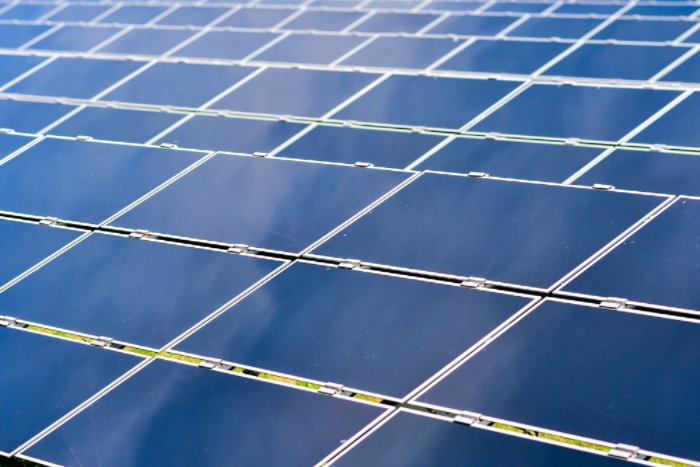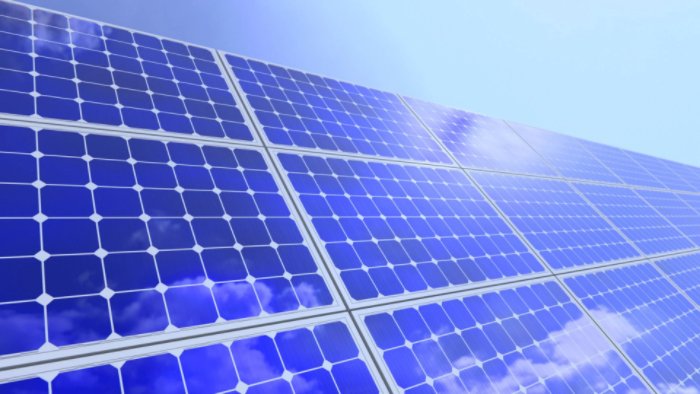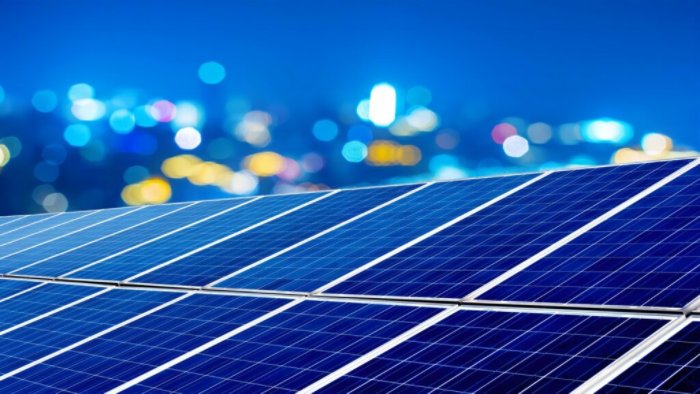How To Maintain Monocrystalline Silicon Photovoltaic Panels For Optimal Performance
Optimize photovoltaic panel configuration and layout
For the operation of moncrystalline silicon solar panels and maximum energy production, configuring and layouting the photovoltaic panels would be an advantageous task. In the present, note that as you layout and configure the PV panels, you should consider the shading, sunlight access and the best electric energy production . Therefore, after the following tips, the generated electric energy can be at maximum, and panels could satisfy proper use:
Site Assessment
Carry out an assessment of the site and conclude what is the right place for laying down the panels. One can conclude this by knowing the latitude of the site by software shade analysis and solar path diagrams. Solar PV can be laid down on the place that smells the most sunlight.
Panel orientation
Note that the best position for placing solar PV is to face the geographical south or in the North himisphare place such it maximally satisfies the energy transmission. In the up to day, this case can be considered using software location and latitude of the site. In expressing the best results, adjust the tilt angle to equal the latitude of the site . An example is that, when the researchers at the National Renewable Energy Laboratory tilted the pannel from 0 to 20 degrees, an increase in enegy production of approximate 5 % and 10 % was experienced and depended on the place.
Spacing and layout
Change the layout and space between the panels to satisfy the best sunlight and lessen the shading enhancing energy best production. Ensure there is maximum space between the panels corresponding to the shading place and the rings. Maximally use the shade analysis tools in the software to place the panels proper lace location.
Inverter Placement
Install the inverters in the Parl and should be placed in the shade and a place with fresh air to dissipate heat . This will cause the converter to function very well . Ensure maximus energy production , place the inverters away from the solar PV as much as possible. Regular Monitoring is important . Use a monitoring management software to know the gas and electricity production . This tool is usefull in knowing whether the conserter is fuctioning properly and invents management of in case of failures.

Regular Inspection and Cleaning
Regular inspection and cleaning is crucial to maintaining the best performance from the monocrystalline silicon photovoltaic panels. Since they are placed outside, these photovoltaic panels are exposed to dirt, shade, and every other environmental condition that may deteriorate with time.
Inspection: Begin the inspection by observing the whole surface of the solar paneling. Look for any signals that the panel may have suffered injury such as cracks or scratches. These injuries can impact the panel’s working proficiency. The user must check if they have any loose connections or signs of corrosion on the connections and wires that may affect function.
-
Cleaning: Cleaning the solar panels regularly is essential to get the most out of them. Use a soft brush or sponge along with a mild detergent solution to gently scrub the surface of the panels. Avoid using abrasive materials or harsh chemicals as these will scratch and, potentially, damage the surface of the solar panels. Rinse off the soap from the surface of the panels completely, as any remaining soap will prevent the water from breaking into small droplets, which is essential for the cleaning process.
-
Frequency: The frequency of inspection and cleaning will be varying according to the specific environmental conditions in your location. However, for optimal performance of the solar panel, at least inspection, and cleaning should be done every 1-3 months. If you are living in a very dusty or densely polluted area, then you will need to do it every month.
-
Impact on efficiency: Several studies have shown that regular cleaning has a significant impact on the efficiency of solar panels. Indeed, according to Trivedi, S.K., Singh, P.K., & Tiwari, G.N. , “dust on the surface of the PV modules reduces the monthly average efficiency by up to 25% compared to the monthly average efficiency of clean PV modules” . For example, A study conducted by the National Renewable Energy Laboratory on different solar farms in the United States shows that cleaning solar panels improved their efficiency by 12%. This increase in the efficiency implies that the output of a solar panel system that initially produces 10 watts of electricity could increase its production to 11.2 watts through cleaning.
-
Conclusion: The efficiency of monocrystalline silicon photovoltaic panels degrades slightly over time. As such, it is inevitable that regular inspection and cleaning will be necessary to ensure their optimal performance. Furthermore, by constantly inspecting and cleaning them, you will be able to implement minor tweaks that will help extend the lifespan of the batteries.
Fault Detection and Timely Repair
Ideally, I would like to talk about how important it is to detect and timely eliminate faults, introducing the process in such a way that the operator has an interest in listening. I want to suggest ways to monitor the performance of silicon monocrystalline cells and then move on to their timely repair. If you create for me a semblance of an introduction, I will fill in the blanks that I left.
How to Monitor Regular Operation
-
Regular Monitoring
Conduct routine checks of the solar panels on the regularity of their work. You can use monitoring software or do everything in manual mode. Keep an eye out for abnormal energy production indicators or system failures: this will be the first sign of a fault.
-
Data Analysis
From the data you have collected, analyze the traffic pattern so that you can determine when there is a problem with your solar panel system. Information is voltage ouput, current ouput, and temperature ratings. If your system suddenly stops producing energy, this is the first signal to look for.
-
Diagnostic Testing
Run a diagnostics test on your system to see what specific data has prompted you to find a flaw. Test individual components of your solar panel system: inverter, charge controller, and connection line. Use a device that measures voltage, current, and resistance: it identifies the flaw.
What You Should Do To Repair The Defect
-
Immediate Action
You need to immediately fix the problem by replacing the defective system, so as not to miss a single minute and a kilowatt, which you should have been working.
-
Example
If the monitoring software shows you that the energy produced by a particular solar panel string has suddenly dropped, you can look at that pole closer. Maybe something is not working in one of the plates, for example, the bypass diode is probably out of order. So you can just replace it, and the charge will start as if a new element has been set up.
-
Relative Preventive Monitoring
To avoid stringing, periodically close the lid of the connections, the plugs, the nipple, and the spray it with a repellent that will prevent these parts from oxidizing. In addition, you need to trim the bushes so that they do not shade your solar panels.
-
Documentation
And one more thing: you should constantly monitor the system, account for every control, repair service, and preventive maintenance operation, and prepare a table with these points in order to establish each energy indicator. That is why this information will interest the operator.

System Performance Monitoring and Optimization
System performance monitoring and optimization are crucial for maintaining monocrystalline silicon photovoltaic panels . By constantly monitoring systems performance and applying specific optimization measures, you can ensure that the system reaches its maximum power output. In this regard, it is possible to point out several recommendations that can be beneficial in the process of optimization:
-
Continuous monitoring: To ensure that the system functions properly, it is required to install a monitoring system to keep track of solar panels in real-time. Available options include system-monitoring software, which can collect information on energy produced by the system, the total voltage, the current output, and other related performance parameters. In this way, it is possible to review this data constantly to identify areas of concern.
-
Performance analysis: In order to identify the overall performance level and determine areas of greater performance and those with lower outcomes, it is required to comprehensively analyze all performance data. In the process of analysis, it is suggested to track the effect of such factors as seasonality, shading, and the weather on panels productivity. This way, they become a basis for establishing specific optimization measures.
-
Optimization measures: Defined performance data allow for the development of optimization measures. In fact, it is possible to outline several options for optimization founded on the available data. It includes fine-tuning the panels exposure to sunlight via change in their tilt, the rest of the system elements such as inverter and a charge controller, shading problems, for instance, from adjacent trees or other buildings . For example, after constantly receiving information that certain panels are consistently underperforming due to shading from the trees, it is suggested to either remove trees or build the shading structure.
-
Regular maintenance: It can be beneficial to incorporate regular maintenance in the process of monitoring and optimization. It includes cleaning the panels, inspection for wear and tear on the panels, and regularly scheduled preventive maintenance on other parts of the system. Track performance: It is important to also track systems performance over constant time. If tracking what the system was producing yesterday and what you are getting from it today, it may be beneficial to adjust optimization techniques for solar panels . .

Long-term Maintenance Planning for Photovoltaic Panels
Long-term maintenance planning for photovoltaic panels is crucial for optimal performance and longevity of monocrystalline silicon solar panels. Once you have implemented an appropriate maintenance program, the long-term maintenance planning is critical to obtain the benefits and values of the entire plan.
Initial assessment
First, you will assess the overall condition and performance of solar panels to identify the existing problems and potential threats. Your assessment will take into consideration the state of the panels, including possible damages, the overall performance of all system components such as inverter, wiring, and other components and the environmental conditions that might affect the performance.
Maintenance schedule
The task is to maintain a schedule for regular maintenance activities and frequency of each activity. Your maintenance schedule will include daily, routine, periodic inspections, scheduled cleaning and occasional preventive maintenance. You will have to take into consideration factors affecting the maintenance frequency, such as local weather, environmental problems, and the recommendations of the manufacturer.
For example, for monocrystalline silicon solar panels installed in a residential building, you might want to follow a schedule of quarterly inspections, semiannual cleaning, and annual preventive maintenance carried out by a specialist. The appropriate approach to planning your assignment should be continuous and consistent with your daily routine. Thus, you will not forget to control your solar panels and keep them in optimal performance all year.
Documentation
The task is to keep all the records, including inspection reports, cleaning reports, and maintenance schedules. These reports will help you assess the long-term performance of the solar panels and detect any trends during the assessment.
Budget planning
The task is to develop a budget for the entire long-term maintenance program for the solar panel system. The budget might include regular maintenance and upkeeping, and any expenses anticipated or needed for repairs and upgrades in the long run. You will not experience any surprises in the form of additional costs when you have developed and adjusted your budget after making the assignment.
Performance monitoring
Implement a strong monitoring system for tracking the performance of the solar panel system in the long run. You may decide to install monitoring system applications to monitor the amount of electricity produced and the efficacy of the system. Track and analyze the monitoring data to determine whether it is time to maintain or adjust the solar panels.